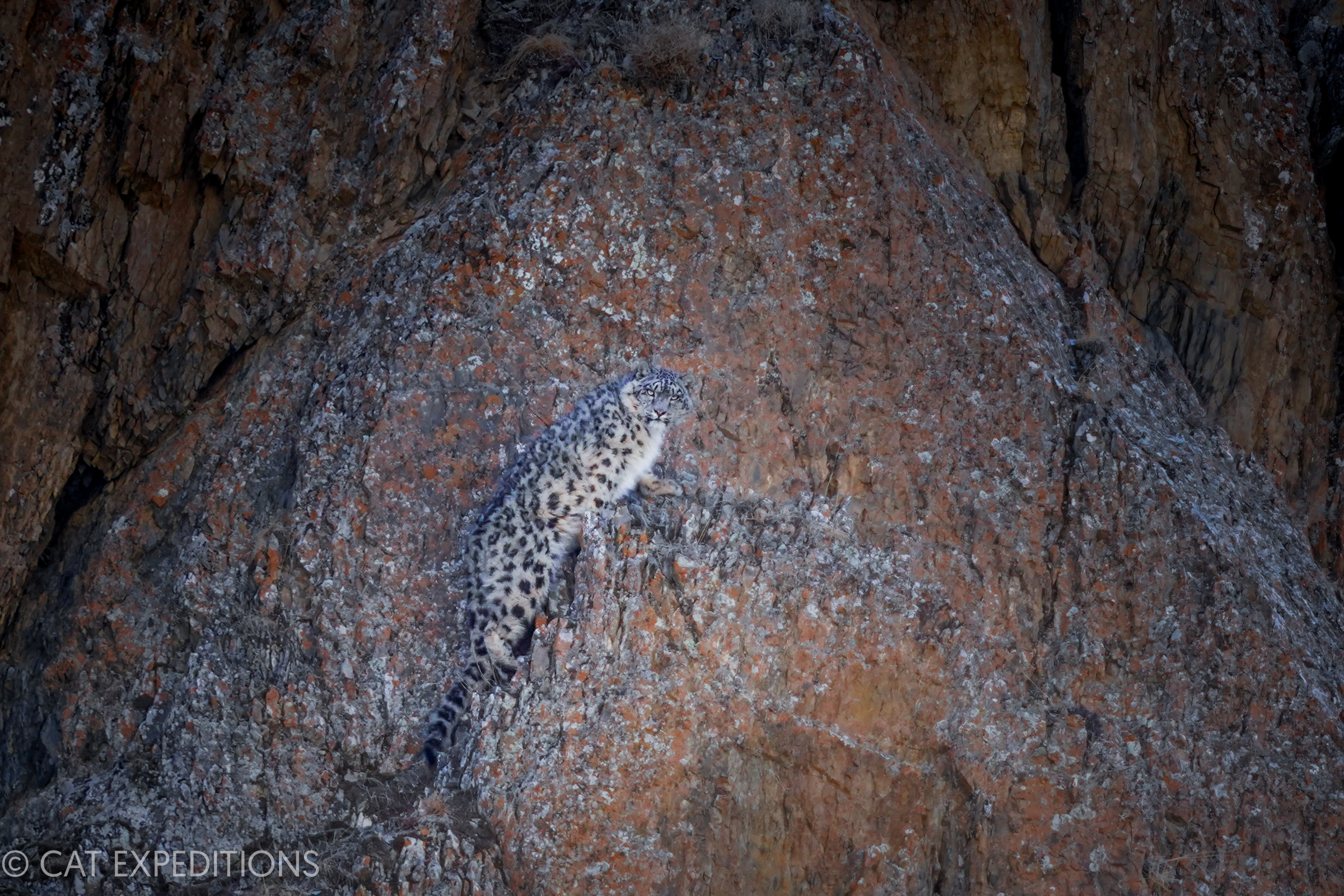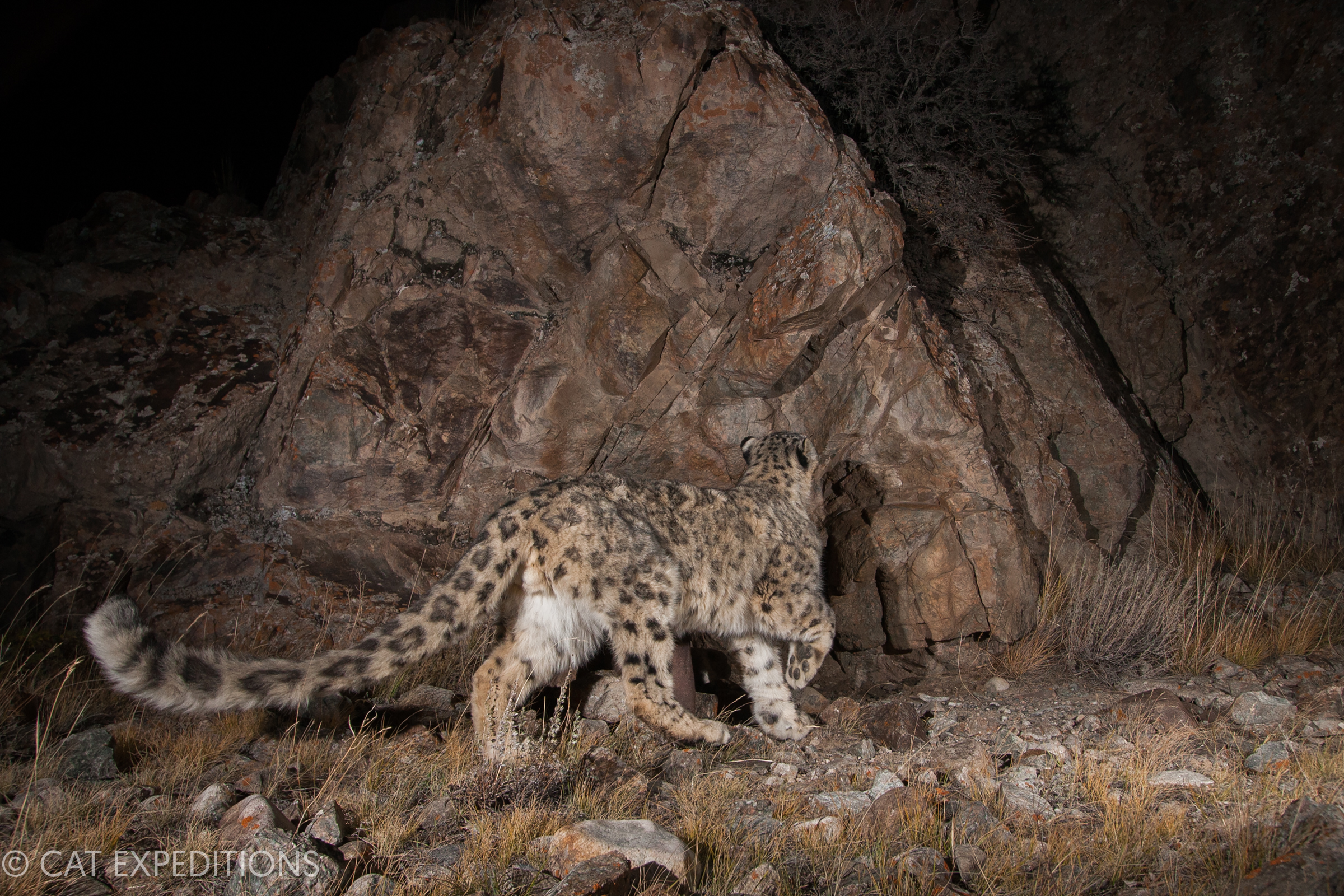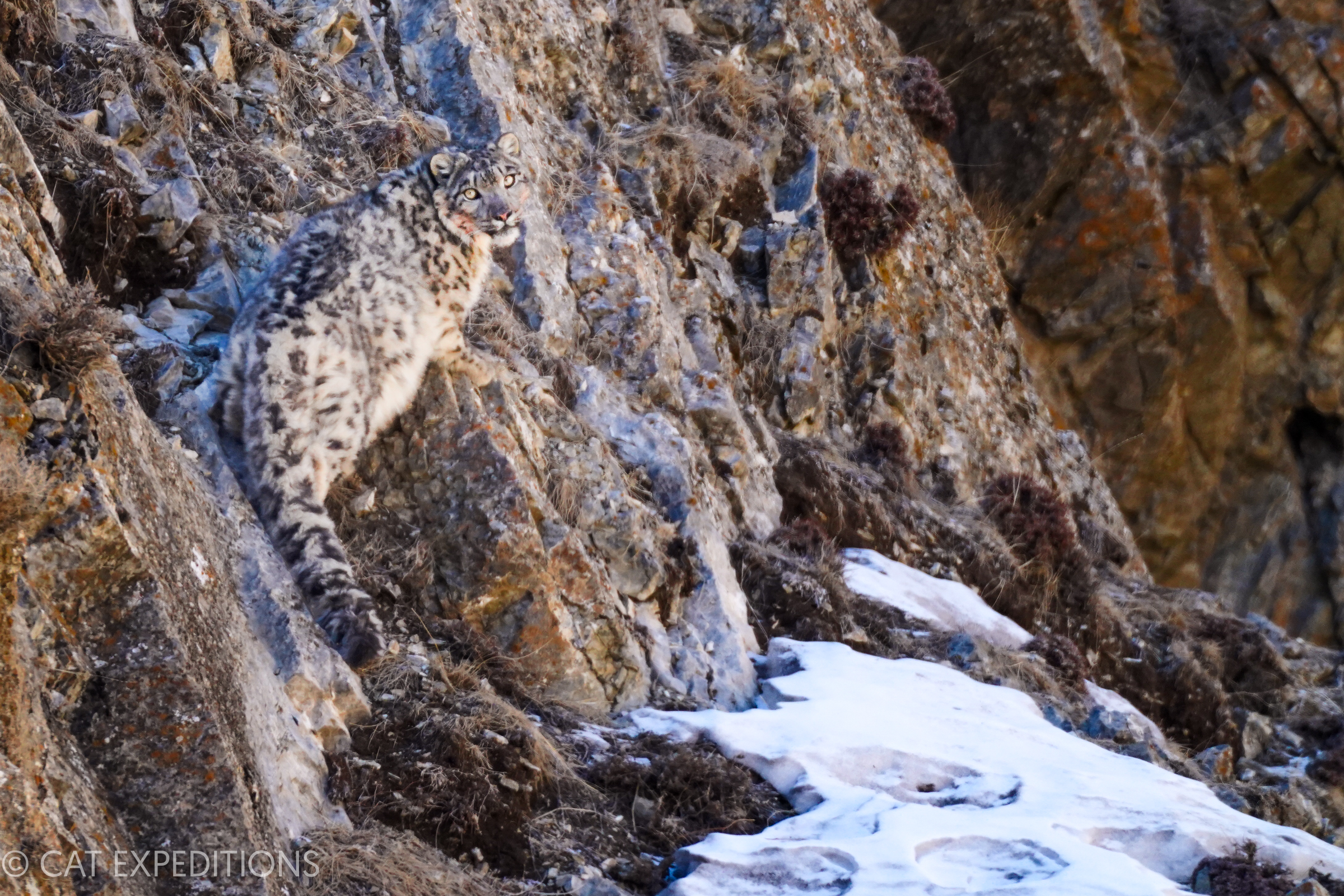Snow Leopard
SNOW LEOPARD (Panthera uncia)
Snow leopards are mountain specialists found across Asia at elevations up to 15,000 feet. They are well adapted to live in their rugged mountain habitats, having the thickest and longest fur of any cat, and having one of the longest tails in relation to their body length. Due to their extreme camouflage they are called the ghost of the mountain, capable of disappearing in plain view. There are less than 10,000 adult snow leopards left in the world and their population is declining.
Difficulty: Difficult
Snow Leopard Photo Tour Statistics
2 SNOW LEOPARD TOURS RUN
6.5 AVG NUMBER OF SNOW LEOPARD SIGHTINGS
96 MINUTES ON AVG
WITH EACH CAT
Snow Leopard Description
Snow leopards are the smallest of the big cats, with males only reaching up to 121 pounds (55 kg). Its body is stocky, with short limbs and a very long tail. The tail is as long as ninety percent of the head to body size. It will use the tail for balance, to store fat reserves, and to keep itself warm in the winter, covering itself with it like a blanket. It has white-grey colored fur with dark grey or black spots and rosettes with pale centers. The snow leopard's spotted fur pattern allow it to perfectly blend into its native mountain habitat. There have been countless times where the snow leopard disappeared right in front of our eyes, during our snow leopards of Mongolia photo tour, due to its incredible camouflage. Their fur is the longest and thickest fur of any wild cat, and it grows tremendously in the winter to deal with the sub-zero temperatures. To thrive in the mountains, snow leopards have enlarged nostrils, allowing them to take in more air. Their ears are small to minimize heat loss and their paws are large and furred to walk over cold snow.
A sub-adult snow leopard climbs a small ledge effortlessly, partially due to its long tail. These cats perfectly camouflage into their mountain habitat, including the Altai mountains of western Mongolia where we hold out tour.
Snow Leopard Distribution and Habitat
Snow leopards have an extensive distribution across Asia. They are found from Russia to India, and in central Asia from Uzbekistan to central China. Snow leopards are generally found in the alpine, and sub-alpine zone, at elevations of 9,800 to 14,800 feet (3,000 to 4,500m). In the northern parts of their range, including in Mongolia where we hold our tour, snow leopards can be found at lower elevations, including our location at 6,500 feet. They are generally found above the tree line, but there have been records of them sharing the same forested habitat as common leopards, and even tigers, though these seem like exceptional occurrences. Snow leopards are at home in the mountains, where they are perfectly adapted to thrive. Four our tour, we look for snow leopards in the Altai mountains of western Mongolia.
Snow leopards thrive in the high mountains of Asia, their long fur keeps them warm even in the coldest of conditions, including after the have taken a swim.
Snow Leopard Feeding Biology
Snow leopards are crepuscular, being active at dawn and dusk. During the middle of the day, they generally rest. In the winter, including during our tour, they often prefer to rest in the sunlit sides of the mountains, absorbing the sun's heat during otherwise sub-zero temperatures. We have even seen snow leopards rest in the nests of raptors!
To hunt snow leopards utilize their perfect camouflage to stalk their prey. If they are not close enough to pounce, they will actively run at and pursue their prey, mostly chasing them downhill. Their long tail is crucial during these high-speed pursuits over incredibly steep terrain as it provides balance and steering. When reaching their prey, they pounce on their back and hold on, even if the prey starts tumbling down the mountain side. There are even records of snow leopards falling down high cliffs while clutching onto their prey. The prey is killed by a bite to the throat or neck. Despite being solitary, there are records of snow leopards hunting in pairs, or groups, including mating pairs and mothers with their close to fully grown cubs.
Snow leopards eat a variety of prey, but generally predate mountain ungulates like blue sheep, tahr, argali, markhor, and wild goat. For our tour in Mongolia, snow leopards primarily predate Siberian ibex in the winter and marmots in the summer, making up to 90% of their diet. Snow leopards will also predate domestic livestock, which is why we hire local herdsman to be our spotters and guides, providing economic compensation, including for potential snow leopard predations on their animals. Especially in the winter, snow leopards can feed on large prey for up to a week, as the meat doesn't go bad in the cold temperatures.
Argali (Ovis ammon) female carcass, killed by Snow Leopard (Panthera uncia) in the mountains in winter.
Snow Leopard Social Organization
Like most other cats, snow leopards are solitary and territorial. Home ranges can be between 10 km² and up to 1000 km² in size. This largely depends on the habitat type and prey availability. In Mongolia home range size for snow leopards is around 200 km². Their densities are generally around five to ten individuals per every hundred square kilometers. Though home ranges can have tremendous overlap, generally individual cats will only share about twenty percent of their habitat with other snow leopards.
Snow leopards scent-mark to indicate territories. They will make a scrape, often at overhanging cliffs, with their hind feet. This leaves a scent from their feet, but they will also often spray urine or defecate on these scrapes. Scent-marking cliffs or boulders also serve an important role as the cats spray urine and cheek mark these areas. If a rock has had generations of snow leopards cheek mark it, they will become smooth from the constant friction. Snow leopards have a range of vocalizations including meowing, grunting, prusten and moaning. In the winter time, including our tours, snow leopards will vocalize to indicate their readiness to mate, a deep moaning type call.
Snow Leopard (Panthera uncia) sub-adult approaching scent-marking cliff, which serves as a sign-post for the snow-leopards claiming this territory as theirs.
Snow Leopard Reproduction
Snow leopards have a distinct reproductive season. During our tour in winter, it is snow leopard mating season, with adults seeking mates and then staying together for four to five days to copulate. The gestation period is ninety to a hundred days with three to four cubs being born in the summer. There are very rare records of up to seven cubs being born. Female snow leopards gives birth in a cave, den or rocky crevice lined with fur shed from her underside. Snow leopard cubs are born blind, but can open their eyes around seven days old. The cubs can start to walk at around five weeks and are fully weaned by ten weeks. The cubs leave the den when they are around two to four months of age. Snow leopards provide maternal care for longer than most other felids, with juveniles dispersing at around twenty months. These sub-adults become sexually mature at two to three years and can live up to eighteen years in the wild.
Snow leopards are independent of their mother around twenty months old, however they often still link up with their mothers, like this sub-adult male did, when she had caught a carcass.






